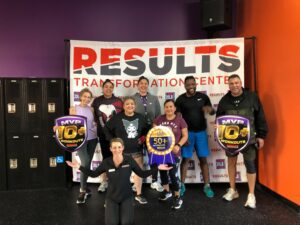In the quest for better health and fitness, the role of effective instruction cannot be overstated. Whether you’re a seasoned fitness instructor or just starting out, honing your teaching skills is essential for guiding individuals towards their fitness goals safely and effectively. In this comprehensive guide, we’ll explore ten indispensable tips that will elevate your fitness instruction to new heights. From fostering a supportive environment to mastering the art of communication, each tip is designed to empower you to become a more impactful and inspiring fitness instructor. Whether you’re leading group classes, one-on-one sessions, or virtual workouts, these strategies will help you maximize your effectiveness and leave a lasting impression on your clients. So, whether you’re passionate about Pilates, enamored with endurance training, or dedicated to dance fitness, join us as we delve into the essential elements of effective fitness instruction that will set you apart in the competitive world of wellness coaching.
Mastering the Basics: The Foundation of Effective Fitness Instruction
Welcome to our comprehensive guide on mastering the basics of effective fitness instruction. Whether you’re a seasoned fitness instructor or just starting out on your journey, understanding and mastering the fundamentals is essential for success. In this blog post, we’ll explore the core principles that form the foundation of effective fitness instruction. From the importance of proper form to the role of communication and motivation, we’ll equip you with the knowledge and skills you need to excel in your role as a fitness coach. Let’s dive in!
 Understanding Anatomy and Physiology
Understanding Anatomy and Physiology
Effective fitness instruction begins with a deep understanding of the human body. Familiarize yourself with basic anatomy and physiology, including major muscle groups, joint mechanics, and physiological responses to exercise. This knowledge will not only help you design safe and effective workouts but also enable you to explain the rationale behind different exercises to your clients.
Emphasizing Proper Form and Technique
Proper form and technique are paramount in preventing injuries and maximizing results. Take the time to educate yourself on correct exercise execution for various movements, such as squats, lunges, and deadlifts. Prioritize teaching proper alignment, breathing techniques, and movement patterns to ensure that your clients perform exercises safely and efficiently.
Customizing Workouts to Individual Needs
No two clients are alike, so it’s essential to tailor workouts to their individual needs and goals. Conduct thorough assessments to identify strengths, weaknesses, and any existing limitations or injuries. From there, develop personalized exercise programs that address their specific objectives while taking into account their fitness level, preferences, and lifestyle factors.
Effective Communication Skills
Communication is a cornerstone of effective fitness instruction. Practice active listening, empathy, and clear verbal cues to ensure that your instructions are understood and followed correctly. Encourage open dialogue with your clients, soliciting feedback and addressing any questions or concerns they may have throughout their fitness journey.
Providing Motivation and Support
As a fitness instructor, you play a crucial role in motivating and supporting your clients. Set realistic goals together, celebrate their achievements, and provide constructive feedback to keep them on track. Cultivate a positive and encouraging environment in your sessions, inspiring your clients to push past their limits and reach new heights in their fitness journey.
Communication is Key: The Art of Clear Instruction in Fitness Training
Welcome to our guide on the crucial role of communication in fitness training. Effective communication is not only about conveying information but also about fostering understanding, motivation, and trust between instructors and clients. In this blog post, we’ll explore the art of clear instruction in fitness training and provide tips for enhancing communication skills to optimize client engagement and results. Let’s dive in!
Establishing Clear Objectives
Clear communication begins with establishing clear objectives for each training session. Before starting a workout, discuss with your clients what they aim to achieve, whether it’s building strength, improving flexibility, or reaching a specific fitness milestone. By aligning on goals upfront, you can tailor your instruction to meet their individual needs and expectations.
Using Simple and Concise Language
In fitness training, clarity is key. Avoid using jargon or technical terms that may confuse your clients, and instead, use simple and concise language to explain exercises and concepts. Break down complex movements into easy-to-understand steps, and provide clear verbal cues and demonstrations to guide your clients through each exercise with confidence.
Demonstrating Proper Technique
Actions often speak louder than words, so be sure to demonstrate proper technique for each exercise before having your clients perform them. Use mirrors or video recordings to illustrate correct form and alignment, and encourage your clients to ask questions or request additional demonstrations if needed. Visual reinforcement can help reinforce verbal instructions and ensure that clients understand how to perform exercises safely and effectively.
Encouraging Active Listening
Effective communication is a two-way street that involves active listening as well as speaking. Take the time to listen to your clients’ concerns, questions, and feedback, and respond with empathy and understanding. Acknowledge their achievements and progress, and provide positive reinforcement to boost their confidence and motivation throughout their fitness journey.
Offering Constructive Feedback
Constructive feedback is essential for helping clients improve their technique and achieve their goals. Provide feedback in a supportive and non-judgmental manner, focusing on specific areas for improvement rather than criticizing mistakes. Offer praise for progress and effort, and offer actionable tips and suggestions for refining their technique and overcoming challenges.
Motivation Matters: Inspiring Clients to Achieve Their Fitness Goals
Welcome to our exploration of the critical role of motivation in fitness training. Motivation is the driving force behind success in any fitness journey, and as instructors, inspiring our clients to stay committed and focused is essential. In this post, we’ll highlight key strategies for fostering motivation and empowering clients to reach their fitness goals.
- Setting Realistic and Achievable Goals: Help clients set SMART (Specific, Measurable, Achievable, Relevant, Time-bound) goals that are realistic and aligned with their aspirations. Breaking larger goals into smaller milestones can make progress feel more attainable and keep motivation levels high.
- Cultivating Intrinsic Motivation: Encourage clients to discover their own reasons for wanting to improve their fitness and health. By tapping into intrinsic motivation – such as a desire for personal growth, increased energy, or improved confidence – clients are more likely to stay committed to their fitness journey over the long term.
- Providing Positive Reinforcement: Recognize and celebrate clients’ progress and achievements, no matter how small. Positive reinforcement boosts confidence and self-esteem, reinforcing the belief that their efforts are making a difference and motivating them to continue pushing towards their goals.
- Offering Variety and Challenge: Keep workouts fresh and engaging by incorporating a variety of exercises, training modalities, and challenges. Introducing new activities and setting progressively challenging goals can prevent boredom, stimulate progress, and reignite motivation when enthusiasm starts to wane.
Conclusion
Mastering the art of effective fitness instruction is paramount for fostering transformative experiences within Results Transformation Center (Sparks) and beyond. These ten essential tips serve as the cornerstone for instructors to empower clients towards their fitness goals. From personalized attention to fostering a supportive environment, each tip plays a vital role in creating meaningful connections and sustainable progress. By consistently implementing these strategies, instructors not only enhance the quality of their sessions but also cultivate a community driven by dedication, motivation, and results. Together, they form the blueprint for excellence in fitness instruction at Results Transformation Center (Sparks).[/vc_column_text][/vc_column][/vc_row]








